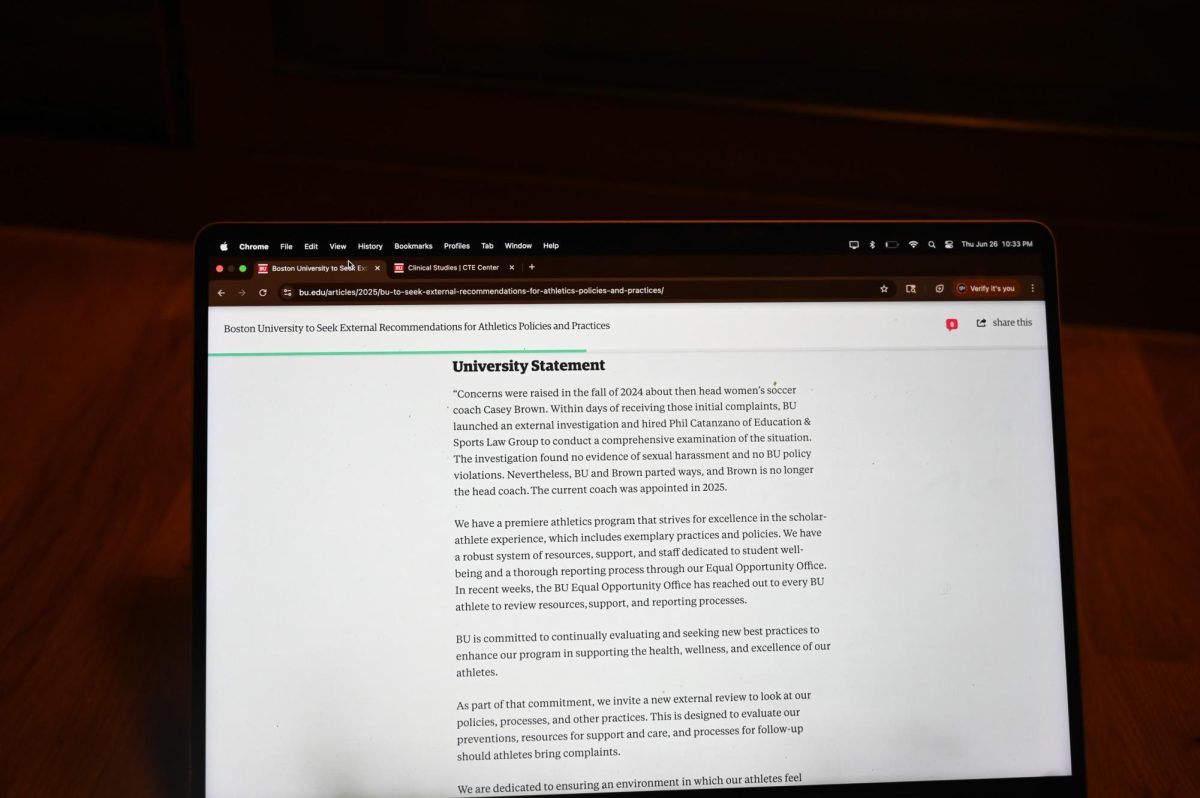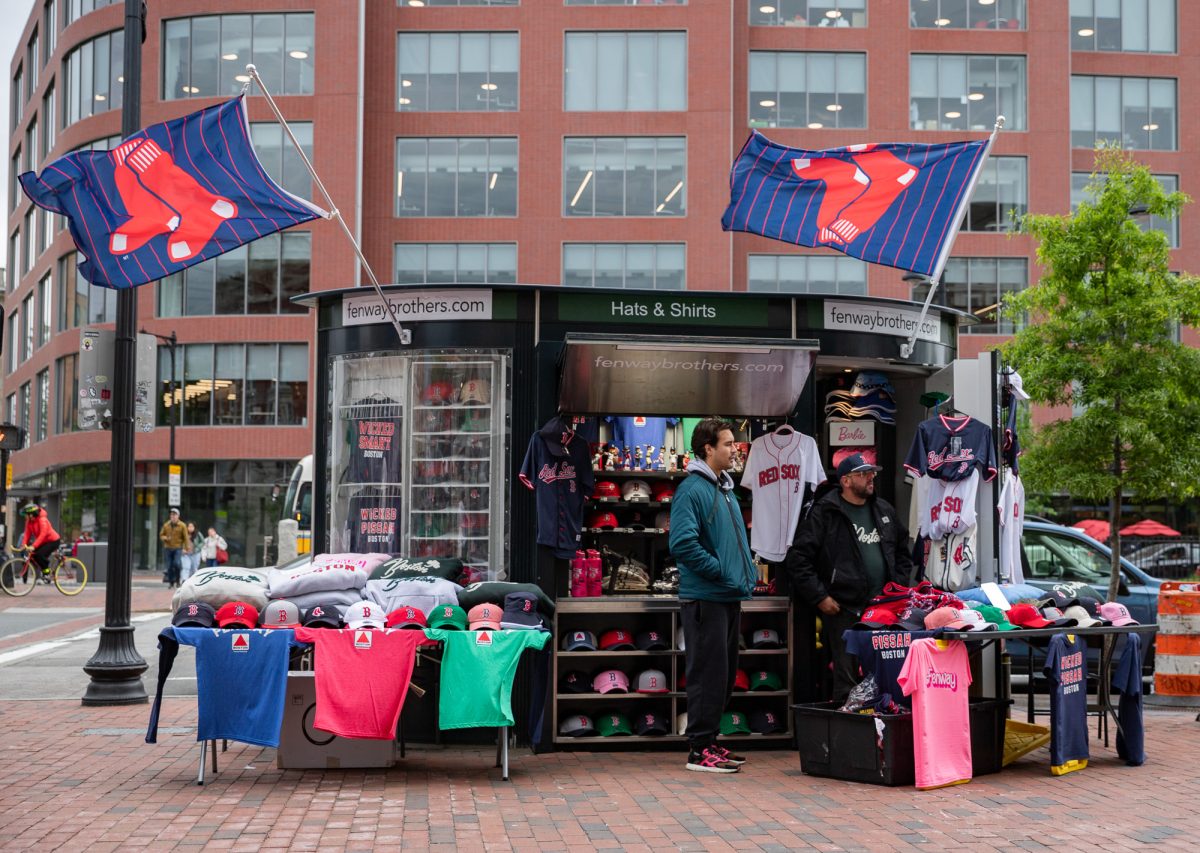The holiday season is a time to spread cheer among family, friends, co-workers or neighbors. It is a time to show your appreciation and to think of others before yourself.
It is also a time to shop.
The giving of gifts in our hyper commercial country often overshadows any underlying meaning the holiday season holds for Americans – which is good news for retailers.
As soon as Thanksgiving ends and the tryptophan-induced doze wears off, millions of Americans flock to stores for the annual sales that signal the beginning of the holiday shopping season.
Black Friday, or the day after Thanksgiving, is the largest consumer traffic day in the United States and is the first step in the month-long waltz of consumers and retailers during which billions of dollars worth of goods and services will change hands.
While the shopping traditionally begins on this fourth Friday in November, the advertising begins much earlier. Some retailers begin rolling out holiday campaigns on the heels of Halloween trick-or-treaters.
Whether immediately following the witches and warlocks or waiting a few weeks, the vast majority of retailers will deploy some sort of holiday decorations designed to draw in even the least devoted consumer. The obligatory advertising blitz attempts to cover the wide range of holidays celebrated in the United States, including enough imagery to bring the holiday point across while at the same time not getting too specific and therefore driving away potential customers who may not celebrate that particular holiday.
Despite efforts to be as politically correct and inclusive as possible, several retailers, such as retail giant Wal-Mart Stores Inc., found themselves in court this year over their campaigns as conservative groups battled their use of “Happy Holidays” instead of “Merry Christmas.” Some groups were so upset by the use of the secular “Happy Holidays” that they vowed to boycott companies who used it in their advertisements over “Merry Christmas.”
A vast majority of Americans, however, appeared to have been nonplussed by the advertising debate and retail numbers remained solid.
Dan Butler, vice president of retail operations at the National Retail Federation, said consumer focus remains on merchandise and pricing, not on advertising slogans.
“This was not an issue in the stores as much as it was in the media. In reality, many stores started using “Happy Holidays” in the 1980s,” Butler said. “Back then there was a lot of concerns from some in the Christian community that Christmas was too commercialized. Retailers really just want to make everyone feel included and they realize that their customers come from diverse cultural and religious backgrounds.”
Backing up Butler’s claims are numbers released by the major target of conservative advertising angst, Wal-Mart Stores Inc., which projected its sales for the period to be only slightly below the expected amount and – announcing a strong growth of 6.3 percent in the five weeks ending Dec. 30 – showing that the overall effect of the issue was minimal.
Multiple sources cite technology retailers Best Buy Co. and Circuit City Inc. as two of the big winners of the 2005 holiday season. The two companies are the nation’s largest consumer electronics retailers and reported strong sales in many different aspects of their businesses.
Frederic Brunel, assistant professor of Marketing in the Boston University School of Management, said a possible reason for the technology merchants’ success is that while technology merchants have normally been oriented to only the traditional adult public, recently retailers have targeted a new audience – thus opening up the electronics market further.
“A hot idea now is electronics that are aimed at the ‘tween’ market, kids around the pre-teen age,” Brunel said. “There are lots of different products targeted at these groups that are basically pared down versions of electronics.
“The products have been adapted to their needs, such as cell phones that can only dial several numbers such as ‘Mom’ or ‘Home’ so that kids won’t be calling everyone…or two-way walkie-talkies.” Brunel said.
Both retailers reported a rise in the sale of high-end flat-panel televisions and a large increase in the number of digital-audio player sales during the 2005 holiday season.
“Best Buy’s authority in consumer electronics, our deep product assortments and outstanding store experience continue to make the difference with customers.” said Brian Dunn, president of Best Buy retail-North America, in a statement.
In the same statement Best Buy Co. reported a 12 percent rise in revenue for the fiscal month ending Dec. 31 at $5.7 billion, compared to $5.1 billion in the same time period in 2004.
Best Buy Chief Executive Officer Brad Anderson stated, “As usual, customers shopped later than ever and results strengthened as the month progressed.”
In a financial statement released by Circuit City, W. Alan McCollough, chief executive officer and chairman, said various home entertainment items rose in sales last month.
“In December we saw strength in a broad number of categories, but we saw significant strength in flat panel televisions, MP3 players and accessories, notebook computers, video game hardware, navigation products and imaging products,” McCollough said.
While video game hardware performed well following the release of Microsoft’s Xbox 360 console, software sales were down slightly overall.
Video game retailers had hoped for a big season thanks to the new Microsoft platform but supply issues derailed those hopes as the consoles quickly became scarce after hitting shelves in November. The scarcity of the product, while a hindrance to unlucky parents searching store after store and coming up empty, led, however, to a huge holiday payoff for those eBay traders who were lucky – or smart – enough to preorder the Xbox 360, as those who had the consoles were able to resell them in minutes on the web.
The units fetched quite a hefty profit for the traders, often selling for more than twice the face value of $300 with some even selling at close to $1,000 on the internet auction site.
It is estimated by some market analysts that the number of Xbox 360 consoles sold on eBay is in the tens of thousands.
The Xbox 360 situation demonstrates a clear pattern that took place during the holiday season: Shoppers, some perhaps frustrated by store traffic and others by product sell-outs, took to the internet.
Brunel said the success of e-merchants would be summed up in three words.
“Convenience, convenience, convenience,” he said. “I think it all comes down to convenience. You can choose when to shop, you have the option to have a gift shipped directly to the recipient and you can even get the gift pre-wrapped.”
Industry analysts had predicted a solid holiday season for online retailers despite major concerns on consumer spending, like the effect of rising gas prices.
“Although the Web will certainly feel the effect of these negative offline trends, the sheer number of new online shopping households – and the lure of free shipping for these shoppers – will sustain sales through the end of December.” Carrie A. Johnson, eCommerce analyst, vice president and research director of Consumer Markets at Forrester Research Inc., said in a statement.
Brunel said he thought that while the effect on individual households would be easy to see it might be hard to determine an overall effect on the entire market.
“If a household has to spend an extra $500 or $5,000 on heating during the year that money has to come from somewhere in the budget and it might come from the discretionary funds that might have otherwise been used on gift-giving,” Brunel said.
Johnson, however, forecast a strong season for e-merchants despite rising energy costs.
“Despite some budget tightening, simple math accounts for a likely healthy increase in online sales: 3.5 million new households began shopping online in 2004, and we’re expecting another 2.5 million to join them in 2005,” Johnson wrote. “These folks may not spend as much as they had originally planned, but they will shop online, keeping sales steady.”
Best Buy, which enjoyed one of the better holiday seasons in-store, also enjoyed strong growth in its online sales. Saying in a statement that, “the company’s revenue from its Web sites grew approximately 40 percent for the fiscal month, as more consumers migrated to Internet shopping and began redeeming gift cards online.”
The strong showing by BestBuy.com was overshadowed by the nation’s other top consumer electronics retailer Circuit City, which showed a 49 percent growth in sales on its own website, CircuitCity.com.
“We believe our guaranteed express pickup offering, which enabled customers to shop for Christmas gifts over the Web through Christmas Eve, was a competitive advantage during the month,” McCollough said.
Another online retailer experiencing a successful holiday sales season was Amazon.com, which announced its best season ever.
James McQuivey, assistant professor of Advertising in the BU College of Communications, and a former e-Commerce analyst at Forrester Research, said the e-retail market continues to gain support from consumers because of constantly improving retail experience for the customer.
“As more retailers optimize their pick, pack and ship logistics capabilities to satisfy online consumers, they are able to price more aggressively, ship on tighter deadlines and give consumers an overall better experience.” McQuivey said. “This accounts for why people who have done holiday shopping in the past almost always report that they will do more in the future. Especially when the next year comes around and they find the experience has improved.”
Amazon.com, which boasts “Earth’s Biggest Selection,” said that video game software and hardware, iPods and other portable MP3 players were top sellers, along with products ranging from music CDs to DVD movies, and from jewelry to apparel.
The company, which operates in six countries including the United States, United Kingdom, France, Japan, Denmark and Canada, reported 108 million orders placed during the holiday season and also noted that it shipped “more than 99 percent of orders in time to meet holiday deadlines worldwide.”
One reason for the success of online retailers is free shipping, said Johnson.
“Seventy-nine percent [of e-merchants] … offer free shipping with limitations versus just 64 percent last year – despite gas surcharges levied by the shippers this year,” she said.
The offer becomes profitable, according to Johnson, because of the limitations placed on it.
“Twenty-five percent of online shoppers fell for free shipping thresholds during the 2004 holiday season, indicating that they purchased more products online to avoid shipping charges,” she said.


















































































































